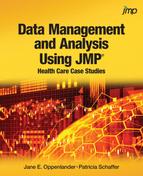Background
Influenza (commonly called the flu) is a contagious respiratory
illness caused by viruses. The flu usually comes on suddenly with
symptoms including fever, sore throat, runny or stuffy nose, muscle
or body aches, headaches, and fatigue. Most people who get influenza
recover in several days to less than two weeks. Young children, older
adults, pregnant women, and those with certain chronic medical conditions
are at high risk of serious flu complications, possibly requiring
hospitalization and sometimes resulting in death.
There are three types
of influenza viruses: A, B and C. Influenza A and B cause seasonal
epidemics almost every winter in the United States. Influenza C infections
cause a mild respiratory illness and are not thought to cause epidemics.
While seasonal influenza
viruses can be detected year-round in the United States, they are
most common during the fall and winter. The exact timing and duration
of flu seasons can vary, but activity often begins to increase in
October. Most of the time flu activity peaks between December and
March, and can last into May.
States report a variety
of measures to the CDC for each week in the flu season (October to
May) including:
-
The numbers of each type of the influenza virus identified by public health laboratories
-
The percentage of their populations experiencing influenza-like illness
-
The geographic spread of flu activity within their borders – widespread, regional, or sporadic
-
The number of influenza-associated hospitalizations
-
The number of influenza-associated deaths
-
The number of respiratory specimens testing positive for influenza
-
The numbers of each type of influenza affecting each age group
Flu outbreaks can affect
the operation of many organizations and a variety of decisions need
to be made before and during the flu season to compensate for absenteeism
and limit disease spread. Long-term care facilities and hospitals
must determine if visiting policies should be modified. Health care
providers need to schedule patients for vaccinations and obtain sufficient
inventories of medications and supplies to treat flu sufferers. Schools
experiencing severe outbreaks may choose to close. Local, state, and
national public health organizations monitor flu activity and prepare
awareness campaigns to encourage vaccination and proper hygiene.
Advance planning decisions can be informed by an understanding of
the year-to-year variation in flu activity, while decisions made during
the flu season may benefit from monitoring weekly activity. In this
case we will make use of Graph Builder to construct visualizations
of flu activity on an annual and weekly basis for two states.
Last updated: October 12, 2017
..................Content has been hidden....................
You can't read the all page of ebook, please click here login for view all page.
